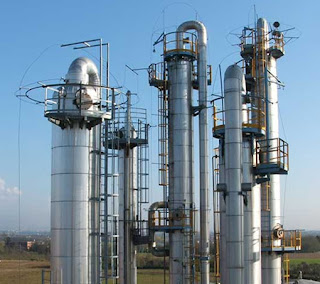What is The Process of Used Oil Refining?
Oil is a valuable resource, no matter your industry, or the industrial process you deal with. Besides, it is an expensive commodity, the purchase of which costs industrialists millions of dollars every year. In such a situation, industrialists must prefer refining used oil and then use it for the appropriate applications.
Re-refining used oil helps you save money, increase process efficiency, and at the same time, contribute to environment conservation. But then, the process of used oil refining also proves crucial in leveraging it to achieve all the said benefits. So, what is the process to re-refine used oil? Here’s the answer.
Re-refining Used Oil in 5 Steps
Oil is a resource that’s prone to the entry of impurities, and contaminants. These anti-oil elements deteriorate the quality of the oil, decrease its efficiency, and add to the maintenance cost of the equipment. Re-refining used oil helps you overcome these challenges through a focused and organized process. So, take a look at re-refining used oil in 5 necessary steps.
- Dehydrating the oil to remove the Undesired Water Content
Unwanted water content proves a significant contaminant for oil. So, the process begins with dehydrating the oil to remove water impurities through evaporation. Further, it involves water collection, chemical, and biological treatment of water, and then discharging it.
2. Recovering Lightweight Chemicals
Next, the process comprises extracting lightweight chemicals for reuse. After removing the water, the used oil goes to tall recovery towers. Here, the refining system separates and collects glycol and light fuels. It reprocesses glycol as a finished automotive grade product.
3. Removing Heavy Fuels
The next step is fuel stripping. It involves removing heavier fuels or industrial use. Further, the oil undergoes heat and vacuum process that helps remove middleweight oils. This process generates fuel as a byproduct for industrial heat treatment.
4. Vacuum Distillation
Vacuum distillation involves reclaiming heavy materials for several uses. It removes the heaviest of impurities through several intricate processes. The process comprises vaporizing the used oil in an extreme vacuum and then condensing it.
Later, it involves separating different types of material from the oil. The process yields heavy oil as the byproduct, which proves useful for several industrial applications. One of them includes their use in making asphalt extenders.
5. Removing Final Impurities through Hydro Treatment
This is the final step in used oil refining. It involves treating the remaining oil with hydrogen to elements such as nitrogen, sulphur, heavy metals, chlorine, and other contaminants. But, the step doesn’t limit removing impurities. It also addresses concerns such as the color, odor, and corrosion performance of the oil. Finally, the refining system separates the purified oil by weight.
Conclusion
Finepac Structures is one of the leading industrial solutions providers in India. The company began operations in 1993. Besides used oil refining, Finepac manufactures a range of mass transfer products, mist eliminators, static mixers, and many other products to serve diverse industrial needs. Besides, the company also deals with services such as mass transfer technology, and separation technology.




Comments
Post a Comment